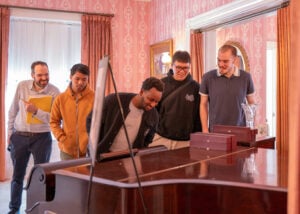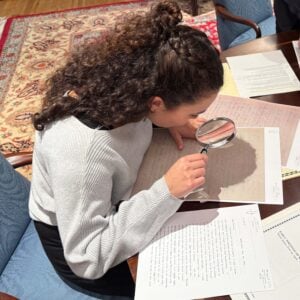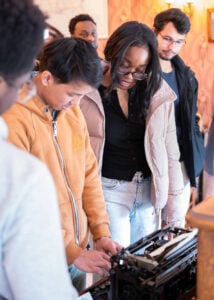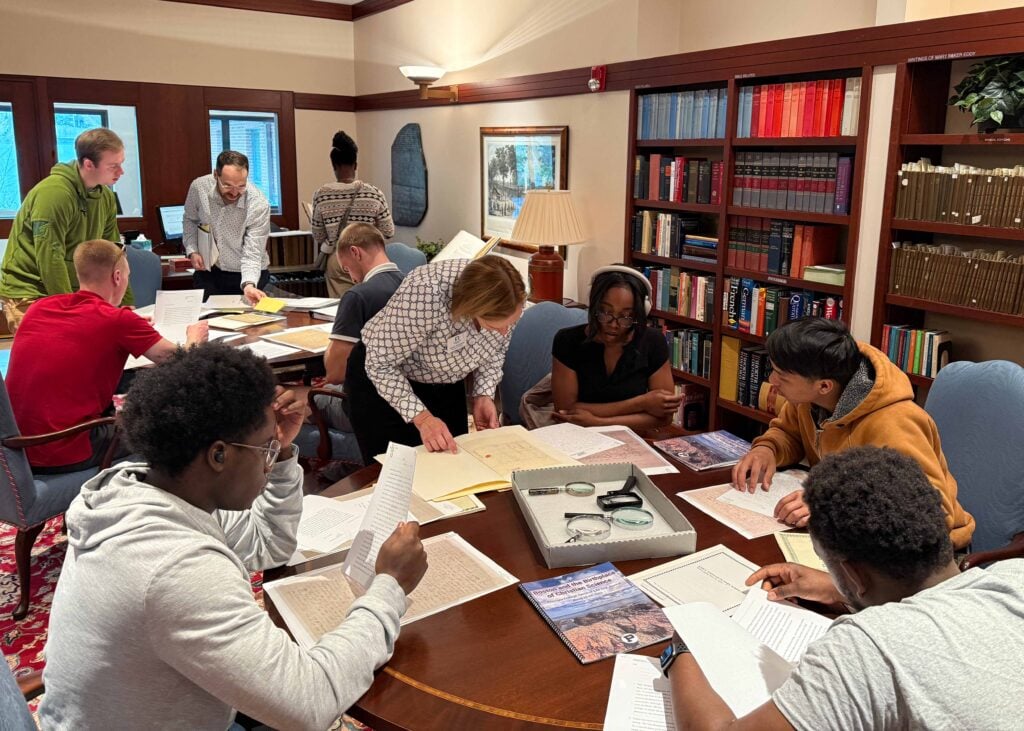On a Thursday afternoon in late March, Longyear Museum’s Daycroft Library was abuzz with activity and conversation, as the Collections team hosted a group of Principia College students for a close encounter with our document archives.
Earlier in the week, the group of 14 students had spent time at the Museum; at Longyear’s Mary Baker Eddy Historic Houses in Concord, New Hampshire, and Swampscott, Lynn, and Chestnut Hill, Massachusetts; the Congregational Church that Mrs. Eddy attended in Tilton, New Hampshire; and The First Church of Christ, Scientist, in Boston.

Dr. Barry Huff, professor of biblical studies and one of the trip leaders, had requested a hands-on session for students to engage directly with Longyear’s archival materials. On his own earlier research visits to the Museum, Dr. Huff says, he had been struck by what he learned from the Baker family’s correspondence, “especially how frequently I saw biblical references … even when talking about everyday aspects of life.”
Some of the students on this trip were enrolled in Dr. Huff’s course titled “The Christian Science Movement,” in a section focusing on sites, archives, and exhibits about Christian Science history. For them, it was the perfect opportunity to relate academics to real-life archival and preservation practices.
Longyear Collections Manager Sarah Sampson first led the visitors through the Museum’s Patzlaff Gallery, a space that exhibits items from Longyear’s collection of material relating to Mrs. Eddy’s family. Here, the students learned about the Bakers’ deep Christian roots and their regard for each other.
To spur thought and discussion, Sarah asked: “If someone 150 years in the future wanted to find out information about you and your family, what resources would they have to look at?” Among the students’ answers: genealogical websites such as ancestry.com; Google searches; email queries.
“This provided a segue into the value of Longyear’s Baker family letters that Mrs. Longyear had the foresight to collect back in the 1920s,” Sarah says. It was an opportunity, she adds, to note how these archived letters “provide ‘durable evidence’ or proof of Mrs. Eddy’s early life with her parents and siblings—especially the thoughts and affection they expressed for each other through these personal letters!”1

Working in two groups, students spent about 30 minutes in the library, reviewing folders that members of the Collections team had compiled. Each contained copies of the original letters (in elegant, 19th-century cursive) along with printed transcriptions. Students were grateful for the latter—as well as for the magnifying glasses provided to facilitate a closer look at the sometimes faint and faded handwriting.
Perusing these as well as other items in the library prompted questions about other correspondence related to Mrs. Eddy, as well as early church history. There were also some good laughs, as the students enjoyed the wry descriptions in the letters: The Baker girls complaining to brother George about the embarrassment of riding into town in the modest family wagon, rather than a more fashionable chaise, for instance, as well as the lightly teasing letters between two Baker brothers.
At the end of their semester, the students taking Professor Huff’s class will share the fruits of their trip when putting together an exhibit in the college library, focused on the churches and homes of Mrs. Eddy.2

